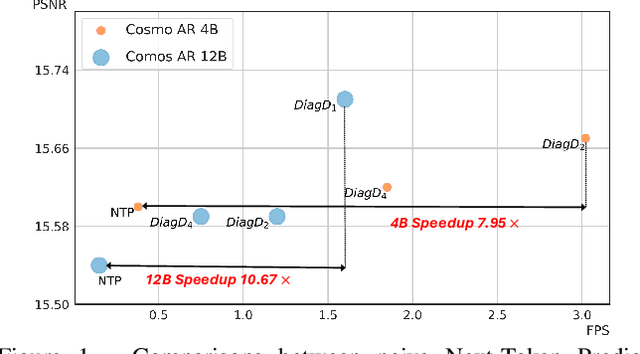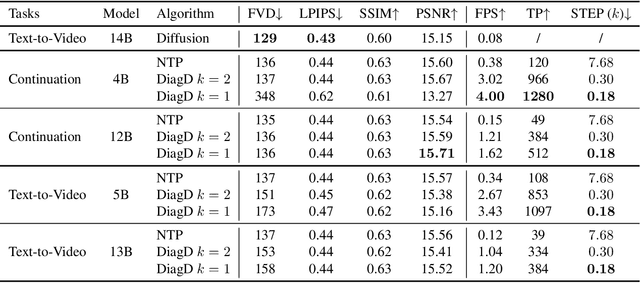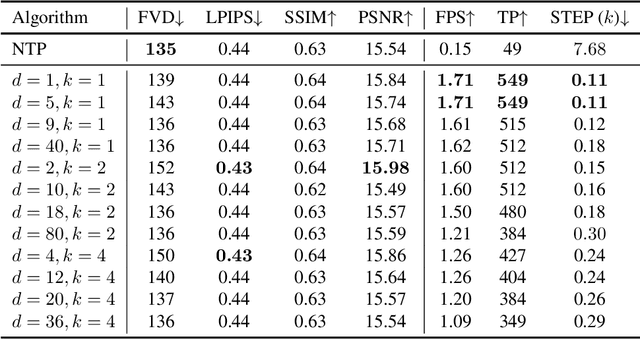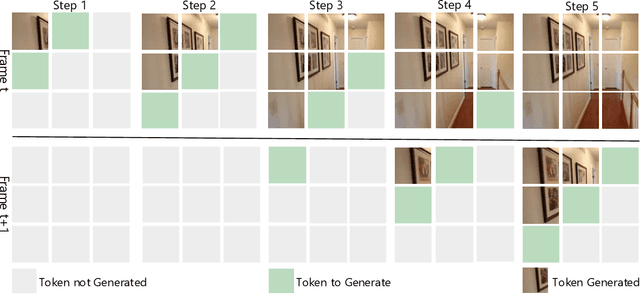Haoyu Wu
Oedipus and the Sphinx: Benchmarking and Improving Visual Language Models for Complex Graphic Reasoning
Aug 01, 2025Abstract:Evaluating the performance of visual language models (VLMs) in graphic reasoning tasks has become an important research topic. However, VLMs still show obvious deficiencies in simulating human-level graphic reasoning capabilities, especially in complex graphic reasoning and abstract problem solving, which are less studied and existing studies only focus on simple graphics. To evaluate the performance of VLMs in complex graphic reasoning, we propose ReasonBench, the first evaluation benchmark focused on structured graphic reasoning tasks, which includes 1,613 questions from real-world intelligence tests. ReasonBench covers reasoning dimensions related to location, attribute, quantity, and multi-element tasks, providing a comprehensive evaluation of the performance of VLMs in spatial, relational, and abstract reasoning capabilities. We benchmark 11 mainstream VLMs (including closed-source and open-source models) and reveal significant limitations of current models. Based on these findings, we propose a dual optimization strategy: Diagrammatic Reasoning Chain (DiaCoT) enhances the interpretability of reasoning by decomposing layers, and ReasonTune enhances the task adaptability of model reasoning through training, all of which improves VLM performance by 33.5\%. All experimental data and code are in the repository: https://huggingface.co/datasets/cistine/ReasonBench.
Geometry Forcing: Marrying Video Diffusion and 3D Representation for Consistent World Modeling
Jul 10, 2025Abstract:Videos inherently represent 2D projections of a dynamic 3D world. However, our analysis suggests that video diffusion models trained solely on raw video data often fail to capture meaningful geometric-aware structure in their learned representations. To bridge this gap between video diffusion models and the underlying 3D nature of the physical world, we propose Geometry Forcing, a simple yet effective method that encourages video diffusion models to internalize latent 3D representations. Our key insight is to guide the model's intermediate representations toward geometry-aware structure by aligning them with features from a pretrained geometric foundation model. To this end, we introduce two complementary alignment objectives: Angular Alignment, which enforces directional consistency via cosine similarity, and Scale Alignment, which preserves scale-related information by regressing unnormalized geometric features from normalized diffusion representation. We evaluate Geometry Forcing on both camera view-conditioned and action-conditioned video generation tasks. Experimental results demonstrate that our method substantially improves visual quality and 3D consistency over the baseline methods. Project page: https://GeometryForcing.github.io.
DualTalk: Dual-Speaker Interaction for 3D Talking Head Conversations
May 26, 2025Abstract:In face-to-face conversations, individuals need to switch between speaking and listening roles seamlessly. Existing 3D talking head generation models focus solely on speaking or listening, neglecting the natural dynamics of interactive conversation, which leads to unnatural interactions and awkward transitions. To address this issue, we propose a new task -- multi-round dual-speaker interaction for 3D talking head generation -- which requires models to handle and generate both speaking and listening behaviors in continuous conversation. To solve this task, we introduce DualTalk, a novel unified framework that integrates the dynamic behaviors of speakers and listeners to simulate realistic and coherent dialogue interactions. This framework not only synthesizes lifelike talking heads when speaking but also generates continuous and vivid non-verbal feedback when listening, effectively capturing the interplay between the roles. We also create a new dataset featuring 50 hours of multi-round conversations with over 1,000 characters, where participants continuously switch between speaking and listening roles. Extensive experiments demonstrate that our method significantly enhances the naturalness and expressiveness of 3D talking heads in dual-speaker conversations. We recommend watching the supplementary video: https://ziqiaopeng.github.io/dualtalk.
MineWorld: a Real-Time and Open-Source Interactive World Model on Minecraft
Apr 11, 2025Abstract:World modeling is a crucial task for enabling intelligent agents to effectively interact with humans and operate in dynamic environments. In this work, we propose MineWorld, a real-time interactive world model on Minecraft, an open-ended sandbox game which has been utilized as a common testbed for world modeling. MineWorld is driven by a visual-action autoregressive Transformer, which takes paired game scenes and corresponding actions as input, and generates consequent new scenes following the actions. Specifically, by transforming visual game scenes and actions into discrete token ids with an image tokenizer and an action tokenizer correspondingly, we consist the model input with the concatenation of the two kinds of ids interleaved. The model is then trained with next token prediction to learn rich representations of game states as well as the conditions between states and actions simultaneously. In inference, we develop a novel parallel decoding algorithm that predicts the spatial redundant tokens in each frame at the same time, letting models in different scales generate $4$ to $7$ frames per second and enabling real-time interactions with game players. In evaluation, we propose new metrics to assess not only visual quality but also the action following capacity when generating new scenes, which is crucial for a world model. Our comprehensive evaluation shows the efficacy of MineWorld, outperforming SoTA open-sourced diffusion based world models significantly. The code and model have been released.
Fast Autoregressive Video Generation with Diagonal Decoding
Mar 18, 2025



Abstract:Autoregressive Transformer models have demonstrated impressive performance in video generation, but their sequential token-by-token decoding process poses a major bottleneck, particularly for long videos represented by tens of thousands of tokens. In this paper, we propose Diagonal Decoding (DiagD), a training-free inference acceleration algorithm for autoregressively pre-trained models that exploits spatial and temporal correlations in videos. Our method generates tokens along diagonal paths in the spatial-temporal token grid, enabling parallel decoding within each frame as well as partially overlapping across consecutive frames. The proposed algorithm is versatile and adaptive to various generative models and tasks, while providing flexible control over the trade-off between inference speed and visual quality. Furthermore, we propose a cost-effective finetuning strategy that aligns the attention patterns of the model with our decoding order, further mitigating the training-inference gap on small-scale models. Experiments on multiple autoregressive video generation models and datasets demonstrate that DiagD achieves up to $10\times$ speedup compared to naive sequential decoding, while maintaining comparable visual fidelity.
CoheDancers: Enhancing Interactive Group Dance Generation through Music-Driven Coherence Decomposition
Dec 26, 2024



Abstract:Dance generation is crucial and challenging, particularly in domains like dance performance and virtual gaming. In the current body of literature, most methodologies focus on Solo Music2Dance. While there are efforts directed towards Group Music2Dance, these often suffer from a lack of coherence, resulting in aesthetically poor dance performances. Thus, we introduce CoheDancers, a novel framework for Music-Driven Interactive Group Dance Generation. CoheDancers aims to enhance group dance generation coherence by decomposing it into three key aspects: synchronization, naturalness, and fluidity. Correspondingly, we develop a Cycle Consistency based Dance Synchronization strategy to foster music-dance correspondences, an Auto-Regressive-based Exposure Bias Correction strategy to enhance the fluidity of the generated dances, and an Adversarial Training Strategy to augment the naturalness of the group dance output. Collectively, these strategies enable CohdeDancers to produce highly coherent group dances with superior quality. Furthermore, to establish better benchmarks for Group Music2Dance, we construct the most diverse and comprehensive open-source dataset to date, I-Dancers, featuring rich dancer interactions, and create comprehensive evaluation metrics. Experimental evaluations on I-Dancers and other extant datasets substantiate that CoheDancers achieves unprecedented state-of-the-art performance. Code will be released.
VideoDPO: Omni-Preference Alignment for Video Diffusion Generation
Dec 18, 2024



Abstract:Recent progress in generative diffusion models has greatly advanced text-to-video generation. While text-to-video models trained on large-scale, diverse datasets can produce varied outputs, these generations often deviate from user preferences, highlighting the need for preference alignment on pre-trained models. Although Direct Preference Optimization (DPO) has demonstrated significant improvements in language and image generation, we pioneer its adaptation to video diffusion models and propose a VideoDPO pipeline by making several key adjustments. Unlike previous image alignment methods that focus solely on either (i) visual quality or (ii) semantic alignment between text and videos, we comprehensively consider both dimensions and construct a preference score accordingly, which we term the OmniScore. We design a pipeline to automatically collect preference pair data based on the proposed OmniScore and discover that re-weighting these pairs based on the score significantly impacts overall preference alignment. Our experiments demonstrate substantial improvements in both visual quality and semantic alignment, ensuring that no preference aspect is neglected. Code and data will be shared at https://videodpo.github.io/.
MLI-NeRF: Multi-Light Intrinsic-Aware Neural Radiance Fields
Nov 26, 2024



Abstract:Current methods for extracting intrinsic image components, such as reflectance and shading, primarily rely on statistical priors. These methods focus mainly on simple synthetic scenes and isolated objects and struggle to perform well on challenging real-world data. To address this issue, we propose MLI-NeRF, which integrates \textbf{M}ultiple \textbf{L}ight information in \textbf{I}ntrinsic-aware \textbf{Ne}ural \textbf{R}adiance \textbf{F}ields. By leveraging scene information provided by different light source positions complementing the multi-view information, we generate pseudo-label images for reflectance and shading to guide intrinsic image decomposition without the need for ground truth data. Our method introduces straightforward supervision for intrinsic component separation and ensures robustness across diverse scene types. We validate our approach on both synthetic and real-world datasets, outperforming existing state-of-the-art methods. Additionally, we demonstrate its applicability to various image editing tasks. The code and data are publicly available.
Importance-based Token Merging for Diffusion Models
Nov 23, 2024



Abstract:Diffusion models excel at high-quality image and video generation. However, a major drawback is their high latency. A simple yet powerful way to speed them up is by merging similar tokens for faster computation, though this can result in some quality loss. In this paper, we demonstrate that preserving important tokens during merging significantly improves sample quality. Notably, the importance of each token can be reliably determined using the classifier-free guidance magnitude, as this measure is strongly correlated with the conditioning input and corresponds to output fidelity. Since classifier-free guidance incurs no additional computational cost or requires extra modules, our method can be easily integrated into most diffusion-based frameworks. Experiments show that our approach significantly outperforms the baseline across various applications, including text-to-image synthesis, multi-view image generation, and video generation.
Direct and Explicit 3D Generation from a Single Image
Nov 17, 2024



Abstract:Current image-to-3D approaches suffer from high computational costs and lack scalability for high-resolution outputs. In contrast, we introduce a novel framework to directly generate explicit surface geometry and texture using multi-view 2D depth and RGB images along with 3D Gaussian features using a repurposed Stable Diffusion model. We introduce a depth branch into U-Net for efficient and high quality multi-view, cross-domain generation and incorporate epipolar attention into the latent-to-pixel decoder for pixel-level multi-view consistency. By back-projecting the generated depth pixels into 3D space, we create a structured 3D representation that can be either rendered via Gaussian splatting or extracted to high-quality meshes, thereby leveraging additional novel view synthesis loss to further improve our performance. Extensive experiments demonstrate that our method surpasses existing baselines in geometry and texture quality while achieving significantly faster generation time.
 Add to Chrome
Add to Chrome Add to Firefox
Add to Firefox Add to Edge
Add to Edge